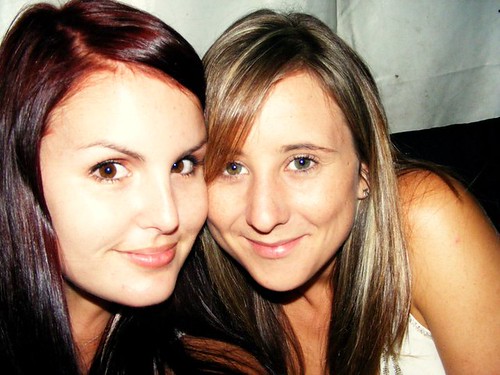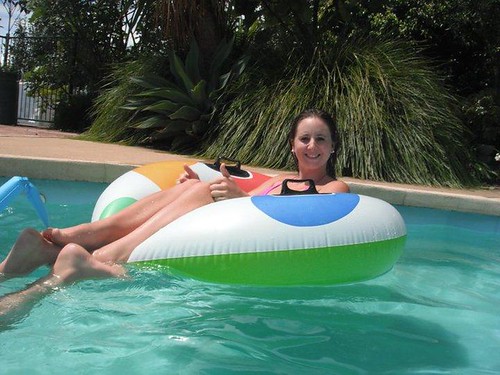For this tutorial I had to link 5 occupational therapy blogs to my blog and post a comment on one of them giving evidence that I have done this...... here is what I posted and the comment I received back:
Tuesday, 29 March 2011
Tuesday, 22 March 2011
Tutorial Six: The internet and online communties
I am using Rheumatoid Arthritis(RA) again as my topic:
Provide the web addresses and a hyper link for the three online communities you have chosen:
http://www.mdjunction.com/rheumatoid-arthritis
http://forums.healthcentral.com/discussion/rheumatoid-arthritis/forums
http://www.youtube.com/results?search_query=rheumatoid+arthritis&aq=f
Provide a brief description of each community:
The MDJunction Rheumatoid arthritis support group is a community of patients, family members and friends dedicated to dealing with Rheumatoid Arthritis, together.
MyRACentral is a way of making connection, asking a question, sharing a concern, giving advice or just having a chat. Their message boards connect people with a community of people who understand where they are coming from and what they are going through.
YouTube provides a way for people who have arthritis, know someone with arthritis, want to know more about arthritis, anyone really- to post videos, comments and discuss.
What services are provided on each site?
MDJuction Rheumatiod arthritis support group:
How interactive is this site? this site is very interact it clearly shows that people are frequently making posts and supporting each other. There are 640 members.
How and what can people contribute? They can contribute- articles, videos, diaries and posts about rheumatoid arthritis.
MyRAcentral:
How interactive is this site? The site is quite interact with the latest post being 2 days ago on the 21/03/2011 which shows people are access the site and making posts.
How and what can people contribute? People are about to make their own forums or make post of comments towards others forums and posts they have made.
YouTube:
How interactive is this site? This site is extremely interactive with 3,280 results appearing for Rheumatoid arthritis alone. Most of the videos have comments about them.
How and what can people contribute? People can contribute by joining YouTube, they can either upload a
video of their own about rheumatoid arthritis experience or knowledge etc or they can just comment on others videos they have made. Some people may like to just watch the video for support or information.
Why do people choose to contribute to each community?
People choose to contribute to these communities as it is a way in which they can express how they are feeling about RA, information they want others to know or that people need to know, discuss different opinion or ideas that people hold, share knowledge about RA.
What is it that they are seeking?
They are seeking a way of support from others that have RA or maybe people that just want to add advice on knowledge that they have about RA.
Is information shared one way or reciprocal?
Both MyRACentral and The MDJunction Rheumatoid arthritis support group are reciprocal but YouTube is not guaranteed that people will reciprocate.
Examples of the type of topics being discussed:
MDJunction examples:
Jackie: what about a laugh room? We all know the bad days, the painful days, the dark days so what about somewhere to go just to read something really stupid and funny. I have a lot of pain today in my neck, shoulders ,wrists and feet and i could cry but i want to laugh instead,, so here goes for all you coffee drinkers out there, I INVITE YOU IN TO LAUGH TIL IT HURTS!!!!!
Her reply from one of the many responses:
MyRACentral examples:
Provide the web addresses and a hyper link for the three online communities you have chosen:
http://www.mdjunction.com/rheumatoid-arthritis
http://forums.healthcentral.com/discussion/rheumatoid-arthritis/forums
http://www.youtube.com/results?search_query=rheumatoid+arthritis&aq=f
Provide a brief description of each community:
The MDJunction Rheumatoid arthritis support group is a community of patients, family members and friends dedicated to dealing with Rheumatoid Arthritis, together.
MyRACentral is a way of making connection, asking a question, sharing a concern, giving advice or just having a chat. Their message boards connect people with a community of people who understand where they are coming from and what they are going through.
YouTube provides a way for people who have arthritis, know someone with arthritis, want to know more about arthritis, anyone really- to post videos, comments and discuss.
What services are provided on each site?
MDJuction Rheumatiod arthritis support group:
How interactive is this site? this site is very interact it clearly shows that people are frequently making posts and supporting each other. There are 640 members.
How and what can people contribute? They can contribute- articles, videos, diaries and posts about rheumatoid arthritis.
MyRAcentral:
How interactive is this site? The site is quite interact with the latest post being 2 days ago on the 21/03/2011 which shows people are access the site and making posts.
How and what can people contribute? People are about to make their own forums or make post of comments towards others forums and posts they have made.
YouTube:
How interactive is this site? This site is extremely interactive with 3,280 results appearing for Rheumatoid arthritis alone. Most of the videos have comments about them.
How and what can people contribute? People can contribute by joining YouTube, they can either upload a
video of their own about rheumatoid arthritis experience or knowledge etc or they can just comment on others videos they have made. Some people may like to just watch the video for support or information.
Why do people choose to contribute to each community?
People choose to contribute to these communities as it is a way in which they can express how they are feeling about RA, information they want others to know or that people need to know, discuss different opinion or ideas that people hold, share knowledge about RA.
What is it that they are seeking?
They are seeking a way of support from others that have RA or maybe people that just want to add advice on knowledge that they have about RA.
Is information shared one way or reciprocal?
Both MyRACentral and The MDJunction Rheumatoid arthritis support group are reciprocal but YouTube is not guaranteed that people will reciprocate.
Examples of the type of topics being discussed:
MDJunction examples:
Jackie: what about a laugh room? We all know the bad days, the painful days, the dark days so what about somewhere to go just to read something really stupid and funny. I have a lot of pain today in my neck, shoulders ,wrists and feet and i could cry but i want to laugh instead,, so here goes for all you coffee drinkers out there, I INVITE YOU IN TO LAUGH TIL IT HURTS!!!!!
Her reply from one of the many responses:
From progrmrgurl: I really love this laugh room idea!! It's so much fun! Thanks!
MyRACentral examples:
Tutorial Five: Video Production Sessions
Provide a brief summary of the services offered by Youtube:
"YouTube is a popular video hosting and sharing service that was purchased by Google in 2006.
The service lets users view and upload video files. In addition to hosting videos, the service lets users rate videos, add comments, and subscribe to their favorite producers" (Karch, 2011).
The registration is free and it is not required to view videos, but you do need to register for some features such as uploading your own videos and commenting and rating others (Karch, 2011).
You can access Youtube via other website or blog spots by not even having to go onto the actual Youtube website, it is very simple to hyperlink (Karch, 2011).
You can find Youtube at http://www.youtube.com/
Introduce a chosen topic of interest drawn from your fieldwork experience, an OT practice area or a personal occupation:
Rheumatoid Arthritis is my topic chosen that I experienced on my first fieldwork placement.
These are five different sources of online video content to help explain Rheumatoid Arthritis:
This first video is of a rheumatologist describing the effects of rheumatoid arthritis.
The second video is of a lady who has lived with rheumatoid arthritis for more than 10years, she shares her experience.
The third video is how someone cured their rheumatoid arthritis and got their life back.
The forth video is a video on exercises for rheumatoid arthritis.
The filth video is about the symptoms of rheumatoid arthritis.
References:
Karch, M. (2011). Youtube explained- Overview of the google video sharing tool. Retrieved from http://google.about.com/od/moreaboutgoogleaps/p/youtubeprofile.htm
"YouTube is a popular video hosting and sharing service that was purchased by Google in 2006.
The service lets users view and upload video files. In addition to hosting videos, the service lets users rate videos, add comments, and subscribe to their favorite producers" (Karch, 2011).
The registration is free and it is not required to view videos, but you do need to register for some features such as uploading your own videos and commenting and rating others (Karch, 2011).
You can access Youtube via other website or blog spots by not even having to go onto the actual Youtube website, it is very simple to hyperlink (Karch, 2011).
You can find Youtube at http://www.youtube.com/
Introduce a chosen topic of interest drawn from your fieldwork experience, an OT practice area or a personal occupation:
Rheumatoid Arthritis is my topic chosen that I experienced on my first fieldwork placement.
These are five different sources of online video content to help explain Rheumatoid Arthritis:
This first video is of a rheumatologist describing the effects of rheumatoid arthritis.
The second video is of a lady who has lived with rheumatoid arthritis for more than 10years, she shares her experience.
The third video is how someone cured their rheumatoid arthritis and got their life back.
The forth video is a video on exercises for rheumatoid arthritis.
The filth video is about the symptoms of rheumatoid arthritis.
References:
Karch, M. (2011). Youtube explained- Overview of the google video sharing tool. Retrieved from http://google.about.com/od/moreaboutgoogleaps/p/youtubeprofile.htm
Tuesday, 15 March 2011
Tutorial Four:Video Production Sessions
We were set a task to make a 30 second film and edit it on windows live movie maker. Then we had to upload it onto our blogs.
There was a lot of frustration with the clips not uploading etc but we got there in the end!This has been a great learning experience of video production.
By using planning we were able to produce a short film quickly and efficiently.
Tutorial Three: Blogger Part One
During this tutorial we set up our individual blogs as hosted on Blogger.com. The tasks we were required to perform included- blog design, profile information, provide a title and description for the blog, set privacy boundaries and linked to the course blog.
I found this really interesting as I have never set up a blog before so it was good to learn how to do the fine tuning of blogging, for in the future when I may need to set up another blog.
Tutorial Two: Digital Imaging
Hardware and software I'm familiar with: Memory sticks, hard drives, adobe
Three examples of the use of digital imaging to provide information and recording:
1. Facebook: http://www.facebook.com/. Facebook provides users with a way of uploading there digital images for others to view and comment on.
2. Myspace: http://www.myspace.com/. Myspace provides that same as facebook but they are slightly different in the way various parts of them work e.g uploading photos, different homepages etc. Facebook is also a lot newer than myspace.
3. Youtube: http://www.youtube.com/. Youtube is a way of uploading videos of digital imaging for others to view for their own entertainment or information.
"A new technology is rarely superior to an old one in every future"
Discuss this statement in relation to digital camera technology. The pluses and minuses digital camera technology holds in relation to more traditional film based cameras?
* Cheaper for printing
*new camera's are more disposable
*with new camera's you can lose the image with a press of a button
*can store a lot more photo's
*very simple to capture and transfer images.
*dark room developing with old camera's
*older camera's are manual, new camera's are manual and auto.
Given the prevalence of image capturing and distribution using IT, what ethical issues may arise with their use?
*privacy.
*ownership (the person who owns the camera owns that photo).
* informed consent.
Briefly discuss some of the ways that digital images could, or are, being used in occupational therapy practice:
*photos for use of treatment and interventions
*visual changes and progress of client's
*photos of events that the client might need to remember
* there are videos on YouTube demonstrating what occupational therapy is all about and also one demonstrating a transfer http://www.youtube.com/watch?v=yiXb1dz0KTw
Tuesday, 8 March 2011
Tuesday, 1 March 2011
Tutorial One: Information Technology and Ethical Issues
Intro: The focus of my first post is on Information Technology and Ethical Issues.
Definition of Information Technology/ Information Communications Technology:
"The use of computers, telecommunication, etc in electronic processing, storing, retrieving and sending information" (Allen, 2004).
Definition in my words: Electronic technology that stores and sends information to other electronic devices.
IT in everyday life and society: People of most society's will all have some form of information technology. Mobile phones, computers, laptops, IPODS, facebook http://www.facebook.com/, blog sites such as blogger http://www.blogger.com/, flicker http://www.flickr.com/ and tumblr http://www.tumblr.com/. Youtube is a very common site used to post videos http://www.youtube.com/.
It has become very common to use these various information technologies to stay in touch with others, express yourself and search different entertainment.
Devices and systems that I feel comfortable and competent using:
I feel comfortable using IT but i do not feel I am completely competent using all aspects of it.
I am very familiar with the social networking site and blogging etc but when it comes to more technical sites I get confused and give up easily.
I am both comfortable and competent using mobile phones but am not when it comes to using computers as I do not feel like I know everything I should about them and there various programs.
I feel that this course and browsing around different IT devices and systems will help to expand my use of IT.
How is IT used in Occupational Therapy Practice?
IT is used by OT's to store information and records of clients. Information technology is used for assessments, occupational performances and tools and interventions for treatment of clients.
What are some of the ways you can envisage IT becoming a potential tool of practise?
Griffiths et al (2003) as cited in Verdonch & Ryan (2008) states that Internet applications can be useful during therapy sessions or, later, as tools for enhancing functional independence.
Griffiths & Gray (2005) as cited in Verdonch & Ryan (2008) believe that computer games can be useful tools for treatment of physical, cognitive and behavioural occupational performance components.
I feel that technology is helping occupational therapy advance by using the various potential it provides. OT's can now work with clients on improving their self-care for example a client who does not have easy access to facilities due to not being able to drive or transport is an issue, there are online websites that the client can do all from the comfort of the home. There is online shopping http://www.thewarehouse.co.nz/red/, online supermarkets http://www.foodtown.co.nz/ and internet banking http://westpac.co.nz/.
Leisure and socialisation via technology is made available to clients with internet site such as http://www.facebook.com/ ( a social networking site), they can blog about their life and possibly even struggles that they are going through on http://www.blogger.com/home, http://www.flickr.com/ and various other sites. Youtube http://www.youtube.com/ is a commonly used site which OT's could possibly use to show the client examples of tools they are wanting them to practice of even just for their own leisure providing entertainment, or casting their own videos.
There are even sites that can provide the client with opportunity for business of buying and selling eg. http://www.trademe.co.nz/ and http://www.ebay.com/.
Issues and existing around OT's adoption of IT systems and tools:
Occupational therapists need to use their clinical reasoning and judgment to assess the possible risks associated with each technology. The dangers on the internet are highly publicised and there is a need to be aware of these, especially when dealing with vulnerable clients. Negative affects, such as aggression and addiction , have been associated with computer gaming.
Why I feel a great understanding and use of IT will help us in our practice and daily lives:
- advancing rapidly in daily life and we need to keep up with how the world is rapidly developing from the use of technology.
- new generations are growing up around technology and they will be the people that we are treating in the next for decades.
- can assist with advancing and improving treatment we provide to clients.
- if we do not have a great understanding of how to use IT we will not use it correctly and to its full potential for the client to benefit from what IT provides.
What ethical implications arise from capturing, sharing and transferring of information via IT devices (e.g. mobile phones) or systems (e.g. internet)?
- the information is not completely safe when being sent from one device to another.
- consent from others when posting photos of people other than yourself on the internet or taking pictures on your mobile phone.
- schools need consent to post pictures and information about students on the internet, that also goes for clients we work with.
- unless your site is locked and only certain users can access it then you need to be aware that anyone can access your information.
Definition of Intellectual Property:
References:
Allen, R. (consultant editor). (2004).The penguin english dictionary. London: Penguin Books http://en.wikipedia.org/wiki/Intellectual_property
Verdonck, M., & Ryan, S. (2008). Mainstream Technology as an Occupational Therapy Tool: Technophobe or Techno geek?. British Journal of Occupational Therapy, 71(6), 253-256.
Wikipedia. (2011). Informed Consent. Retrieved March,10th, 2011 from:
http://en.wikipedia.org/wiki/Informed_consent
Wikipedia. (2011). Intellectual Property. Retrieved March, 9, 2011 from:
Wikipedia. (2011). Social Justice. Retrieved March, 9, 2011 from: http://en.wikipedia.org/wiki/Social_justice
Definition of Information Technology/ Information Communications Technology:
"The use of computers, telecommunication, etc in electronic processing, storing, retrieving and sending information" (Allen, 2004).
Definition in my words: Electronic technology that stores and sends information to other electronic devices.
IT in everyday life and society: People of most society's will all have some form of information technology. Mobile phones, computers, laptops, IPODS, facebook http://www.facebook.com/, blog sites such as blogger http://www.blogger.com/, flicker http://www.flickr.com/ and tumblr http://www.tumblr.com/. Youtube is a very common site used to post videos http://www.youtube.com/.
It has become very common to use these various information technologies to stay in touch with others, express yourself and search different entertainment.
Devices and systems that I feel comfortable and competent using:
I feel comfortable using IT but i do not feel I am completely competent using all aspects of it.
I am very familiar with the social networking site and blogging etc but when it comes to more technical sites I get confused and give up easily.
I am both comfortable and competent using mobile phones but am not when it comes to using computers as I do not feel like I know everything I should about them and there various programs.
I feel that this course and browsing around different IT devices and systems will help to expand my use of IT.
How is IT used in Occupational Therapy Practice?
IT is used by OT's to store information and records of clients. Information technology is used for assessments, occupational performances and tools and interventions for treatment of clients.
What are some of the ways you can envisage IT becoming a potential tool of practise?
Griffiths et al (2003) as cited in Verdonch & Ryan (2008) states that Internet applications can be useful during therapy sessions or, later, as tools for enhancing functional independence.
Griffiths & Gray (2005) as cited in Verdonch & Ryan (2008) believe that computer games can be useful tools for treatment of physical, cognitive and behavioural occupational performance components.
I feel that technology is helping occupational therapy advance by using the various potential it provides. OT's can now work with clients on improving their self-care for example a client who does not have easy access to facilities due to not being able to drive or transport is an issue, there are online websites that the client can do all from the comfort of the home. There is online shopping http://www.thewarehouse.co.nz/red/, online supermarkets http://www.foodtown.co.nz/ and internet banking http://westpac.co.nz/.
Leisure and socialisation via technology is made available to clients with internet site such as http://www.facebook.com/ ( a social networking site), they can blog about their life and possibly even struggles that they are going through on http://www.blogger.com/home, http://www.flickr.com/ and various other sites. Youtube http://www.youtube.com/ is a commonly used site which OT's could possibly use to show the client examples of tools they are wanting them to practice of even just for their own leisure providing entertainment, or casting their own videos.
There are even sites that can provide the client with opportunity for business of buying and selling eg. http://www.trademe.co.nz/ and http://www.ebay.com/.
Issues and existing around OT's adoption of IT systems and tools:
Occupational therapists need to use their clinical reasoning and judgment to assess the possible risks associated with each technology. The dangers on the internet are highly publicised and there is a need to be aware of these, especially when dealing with vulnerable clients. Negative affects, such as aggression and addiction , have been associated with computer gaming.
Why I feel a great understanding and use of IT will help us in our practice and daily lives:
- advancing rapidly in daily life and we need to keep up with how the world is rapidly developing from the use of technology.
- new generations are growing up around technology and they will be the people that we are treating in the next for decades.
- can assist with advancing and improving treatment we provide to clients.
- if we do not have a great understanding of how to use IT we will not use it correctly and to its full potential for the client to benefit from what IT provides.
What ethical implications arise from capturing, sharing and transferring of information via IT devices (e.g. mobile phones) or systems (e.g. internet)?
- the information is not completely safe when being sent from one device to another.
- consent from others when posting photos of people other than yourself on the internet or taking pictures on your mobile phone.
- schools need consent to post pictures and information about students on the internet, that also goes for clients we work with.
- unless your site is locked and only certain users can access it then you need to be aware that anyone can access your information.
Definition of Intellectual Property:
Intellectual property (IP), is a term referring to a number of distinct types of creations of the mind for which a set of exclusive rights are recognized—and the corresponding fields of law. Under intellectual property law, owners are granted certain exclusive rights to a variety of intangible assets, such as musical, literary, and artistic works; discoveries and inventions; and words, phrases, symbols, and designs. Common types of intellectual property include copyrights, trademarks, patents, industrial design rights and trade secrets in some jurisdictions (Wikipedia, 2011).
I understand Intellectual property to be ownership of a persons own thoughts, creations and anything they have potentially developed themselves from their mind.
Relating IT and IP to OT: when an OT is documenting clinical notes into the computer or online to other MDT professionals they always date, name and if they can sign and designate their documents making it the organisation they work for, intellectual property.
Definition of Social Justice:
Social justice generally refers to the idea of creating a society or institution that is based on the principles of equality and solidarity, that understands and values human rights, and that recognizes the dignity of every human being
My understanding of social justice is equal rights and opportunities are made for every member of a society.
Relating IT and Social justice to OT: We need to be careful as OT's to treat our clients as equal in society. When working with clients to introduce them to tools using information technology we need to understand that everyone works at different levels and treat them equally and provide them with just as much opportunity as the other clients.
My understanding of social justice is equal rights and opportunities are made for every member of a society.
Relating IT and Social justice to OT: We need to be careful as OT's to treat our clients as equal in society. When working with clients to introduce them to tools using information technology we need to understand that everyone works at different levels and treat them equally and provide them with just as much opportunity as the other clients.
Definition of Informed Consent:
Legal condition whereby a person can be said to have given consent based upon an appreciation and understanding of the facts and implications of an action (Wikipedia, 2011).
My understanding of informed consent is that a person must agree to an action or information to revealed about themselves by another.
Relating IT and Informed consent to OT: As OT's we need to make sure we always gain a client's consent before proceeding with treatment and documenting their information in an information technology system.
Legal condition whereby a person can be said to have given consent based upon an appreciation and understanding of the facts and implications of an action (Wikipedia, 2011).
My understanding of informed consent is that a person must agree to an action or information to revealed about themselves by another.
Relating IT and Informed consent to OT: As OT's we need to make sure we always gain a client's consent before proceeding with treatment and documenting their information in an information technology system.
References:
Allen, R. (consultant editor). (2004).The penguin english dictionary. London: Penguin Books http://en.wikipedia.org/wiki/Intellectual_property
Verdonck, M., & Ryan, S. (2008). Mainstream Technology as an Occupational Therapy Tool: Technophobe or Techno geek?. British Journal of Occupational Therapy, 71(6), 253-256.
Wikipedia. (2011). Informed Consent. Retrieved March,10th, 2011 from:
http://en.wikipedia.org/wiki/Informed_consent
Wikipedia. (2011). Intellectual Property. Retrieved March, 9, 2011 from:
Wikipedia. (2011). Social Justice. Retrieved March, 9, 2011 from: http://en.wikipedia.org/wiki/Social_justice
Subscribe to:
Posts (Atom)









